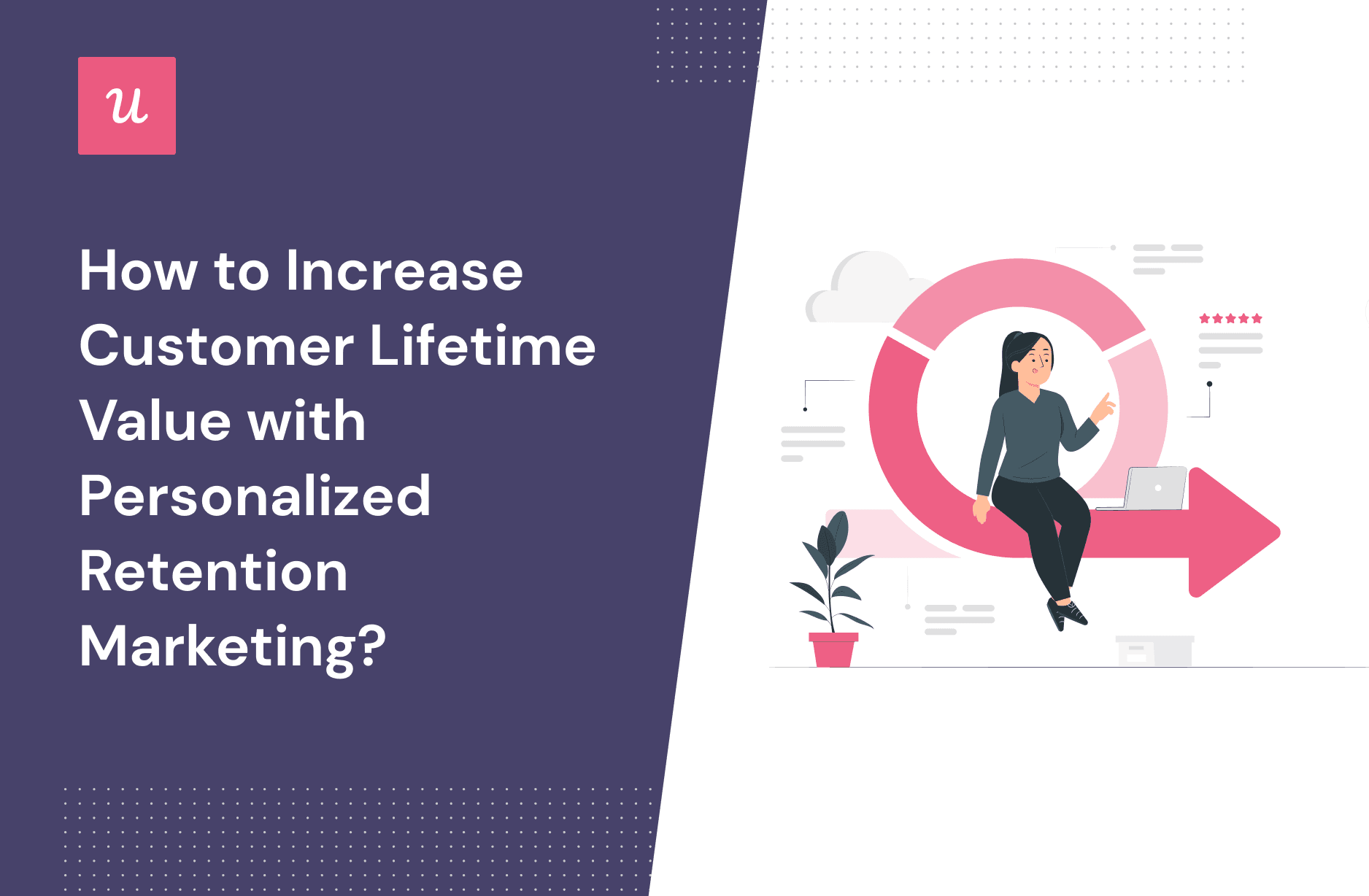
How to Increase Customer Lifetime Value with Personalized Retention Marketing?
Every good product marketer knows; the only thing better than acquiring new customers is retaining existing customers. Can personalized retention marketing grow your customer’s lifetime value and customer retention rate?
This article considers all you need to know about retention marketing.
- How can a personalized experience help drive retention?
- What personalized customer retention strategies are open to you?
- What tools can help you personalize the customer experience?
Let’s begin!
Try Userpilot Now
See Why 1,000+ Teams Choose Userpilot

What is customer retention marketing?
Customer retention marketing is any marketing strategy focused on keeping your existing customers happy and engaged. It involves improving customer satisfaction to drive customer loyalty, lower churn rate, and increase repeat purchases.
Why is personalization important in retention marketing?
At the heart of retention is personalization. Personalization makes customers feel happy and recognized as valued customers. Because personalization strategies lead to a more satisfying customer experience, they also:
Improve customer lifetime value
Customers are more likely to stick with a company after receiving excellent customer service. By personalizing their experience, you help shorten your customer’s time to value, encouraging them to engage more and increase their lifetime value.
Increase the number of loyal customers
Personalization shows your customers that you consider – and value – their interests, thus driving customer loyalty. More than simply becoming repeat customers, loyal customers are delighted to offer positive feedback and recommend your product/service to others.
Save resources on customer acquisition
You spend between five and twenty-five times less to retain customers than to acquire new customers. Assuming both new and existing customers spend the same on your subscription service, you get a higher return on investment with retention than acquisition.
How to personalize experiences to drive retention
To truly personalize your customers’ experience and drive your customer retention rate, you must pay attention to the data. This is a two-step process that involves collecting data and analyzing it.
Collect data from multiple sources
Your first step in personalization is learning about your customer or target audience. Who are they? What are their goals? And, what pain points do they wish to address with your product?
You may already have some ideas from your buyer persona research, but that’s not enough. Begin collecting data at the start of the customer lifecycle when they visit your website or social media networks for the first time.
Take advantage of different marketing data types and sources to better understand your customer. For instance, your marketing data sources may include:
- Market research for identifying common user pain points.
- Analyzing competitors to find their strengths and weaknesses.
- Customer analysis for understanding their preferences, goals, and expectations towards the product.
- Sales analytics to identify better-qualified prospects and improve your marketing strategy.
- Interacting with customers to establish their desired value proposition.
- Collecting customer feedback and engagement data in-app to locate and address their pain points.
Use data to segment users and build customized experiences for each
The second step in personalization is data analysis. After collecting the necessary data, it’s time to analyze it for trends and patterns that may help your personalization and retention efforts.
Your primary goal here is to identify trends in different groups of customers and build segments for each identical group. For instance, you may group customers according to their spending patterns or their jobs to be done (JTBD).
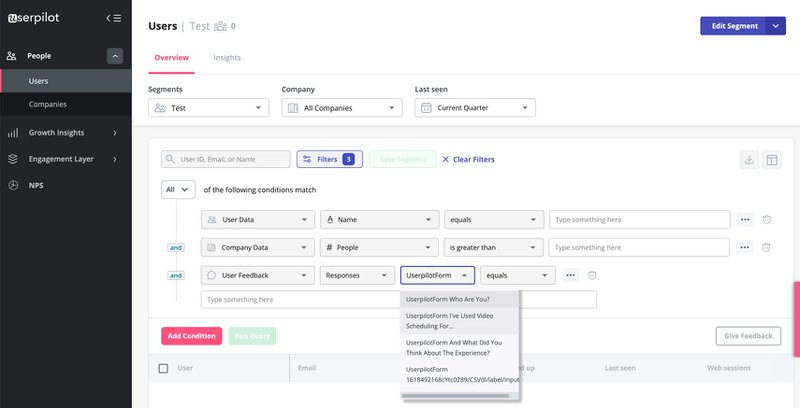
Combining customer segmentation with personalization is an effective way to drive engagement in your customer base and provide them with more value.
Customer personalization strategies that increase customer retention
Armed with your data and user segments, you can begin experimenting with personalization strategies that increase customer retention rates. Some helpful strategies include:
Personalize the onboarding process for new customers
Nailing the onboarding process is a crucial customer retention strategy. Personalized onboarding ensures each user learns how your SaaS product serves their unique, individual needs.
For example, a UX designer may have a different set of goals for an onboarding tool than a product manager using the same tool.
To successfully personalize each user’s onboarding flow, you must first understand their needs. Use a welcome survey to learn about your users and their JTBD and place them in the appropriate segment.
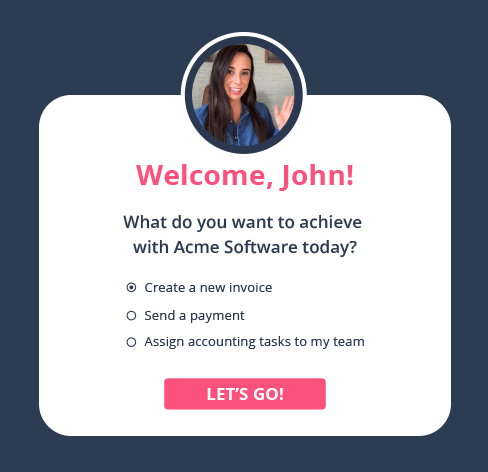
Finally, display the onboarding flow specific to their JTBD segment. This personalized onboarding flow should showcase features necessary for the user to achieve their goals with your product.
Implement different checklists based on JTBD
Onboarding checklists help drive engagement and boost customer retention. They take advantage of human psychology to push more users toward the activation point, thus increasing product adoption rates.
To get the most out of your onboarding checklist, you must personalize them to the needs of your users. Use the checklist to guide users to the features they need to complete their goals based on their JTBD segment.
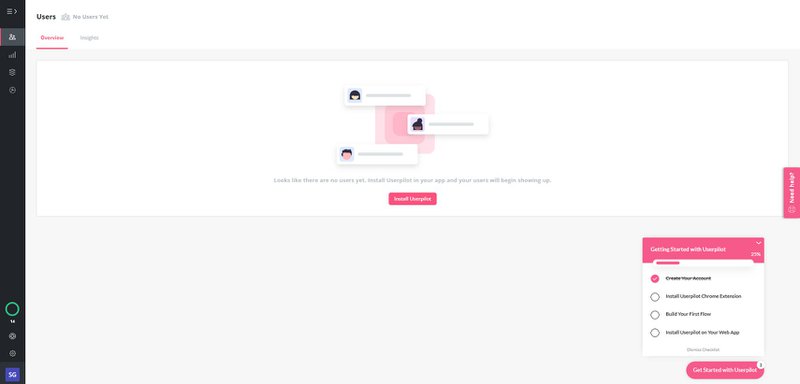
The following checklist features make your checklists more effective:
- Simple to follow, breaking down complex tasks into simple mini-tasks that nudge users toward activation.
- Use progress bars to entice customers to complete the checklist by showing them how they’re getting on.
- Give users a headstart by ensuring there’s already some progress by the time they find the checklist.
- Use action words to provide clear direction on what users should do; Your copy should also state the benefit of any action.
Launch interactive walkthroughs to specific user segments
Interactive walkthroughs are a great addition to your onboarding process and are complementary to the preceding customer retention strategies. They are more engaging than traditional product tours and are less confusing and overwhelming.
Again, a successful product walkthrough should be specific to the needs of each user segment. It employs a series of tooltips to show users how to use your product. The goal is to shorten the user’s time to value by getting them to take action quickly.

For instance, users may be required to fill in empty-state objects as part of the walkthrough. Using custom event tags, you can ensure users complete the action, thus improving product activation and customer retention.
Retain customers with customized educational resources
If there’s anything better than a great primary onboarding process, it is continuous onboarding. Most SaaS products are complex, requiring more guidance for users to get the most out of every feature.
You can provide this guidance via customized educational resources like personalized videos and webinars.
For example, you might find that some users engage briefly with a feature but fail to fully adopt it. This would be a great time to introduce a webinar that shows users how to derive value from the feature.
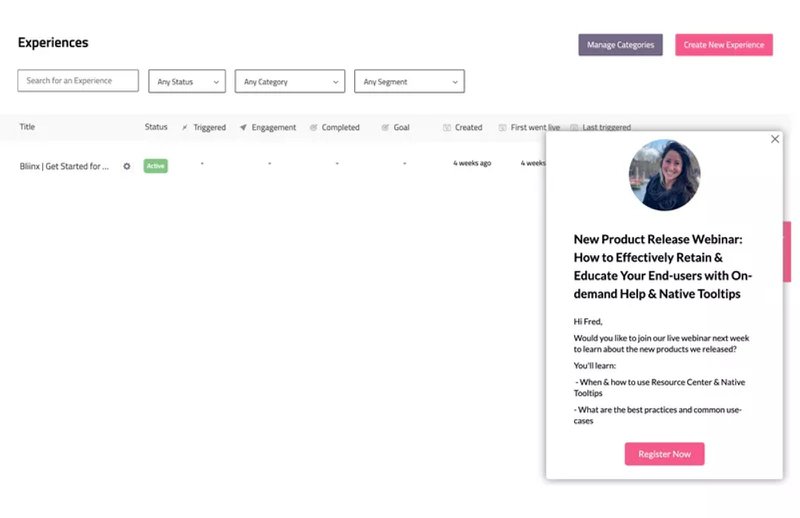
A useful tool for customer retention marketing, personalized video webinars provide targeted feature education and support and help bridge the distance between your company and its customers.
Provide proactive customer service personalized for different users
One way to immediately improve your customer retention metrics is through proactive customer support. This means anticipating potential customer issues and addressing them long before the user faces them.
You can offer proactive self-service support via a help center. Personalize this support by creating different modules for different user segments. Modules shown to each user will then feature solutions that serve the unique goals of their user segment.
Your help center may also include multiple content types to address different user needs. For instance, you can embed in-app video tutorials to provide visual solutions to challenges.

You can also provide feature education using tooltips and walkthroughs the first time a user interacts with the feature. This will reduce confusion over how the feature works and improve feature adoption.
Respond to feedback with customized messages
The easiest way to understand user challenges is to ask them directly. What are their friction points? What additions, changes, or improvements will they like to see?
Customers are more likely to stay loyal to a brand where they feel their voice matters. So, ensure you collect customer feedback and act on it. This may mean working on feature updates or making certain process changes in response to their feedback.
Note that the feedback loop isn’t complete until you get back to users. Send personalized messages to acknowledge or request more information following their feedback.
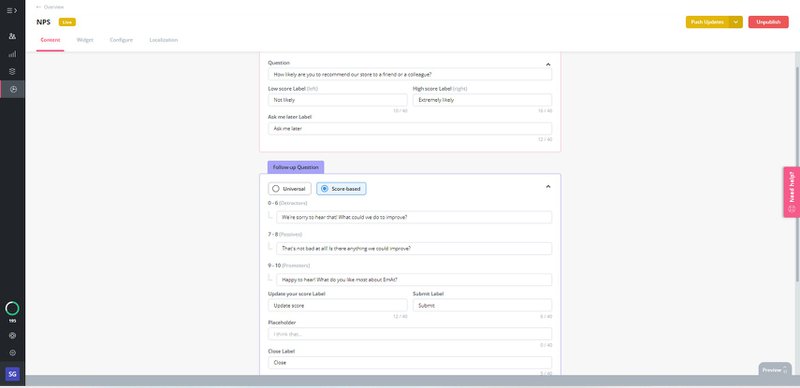
And, if you’ve already made feature updates based on their feedback, be sure to get back to them and inform them of the updates. As you make your current customers happy, you turn them into eager brand advocates happy to spread the word.
Help existing customers discover relevant features contextually
Although customer onboarding begins when a user first signs up for your product, it never ends. Secondary onboarding seeks to drive product stickiness – and, thus, customer retention – by showing customers features they are yet to use.
The next onboarding phase, tertiary onboarding, aims to drive even further engagement. It involves onboarding current customers when new features are released and collecting feedback to ensure their needs are met.
Through continuous onboarding, you provide additional customer value, improve product and feature adoption, and enhance customer retention.
Implement customer loyalty programs
A customer loyalty program helps bring additional value to customers and improve customer relationships. Also known as brand loyalty programs, they reward customers for sticking with the brand and recommending them to others.
For instance, you may encourage customers to refer others by offering rewards. You can also conduct NPS surveys to identify loyal customers who recommend your product to others. Then, reach out to those with high NPS scores in-app to offer their reward.
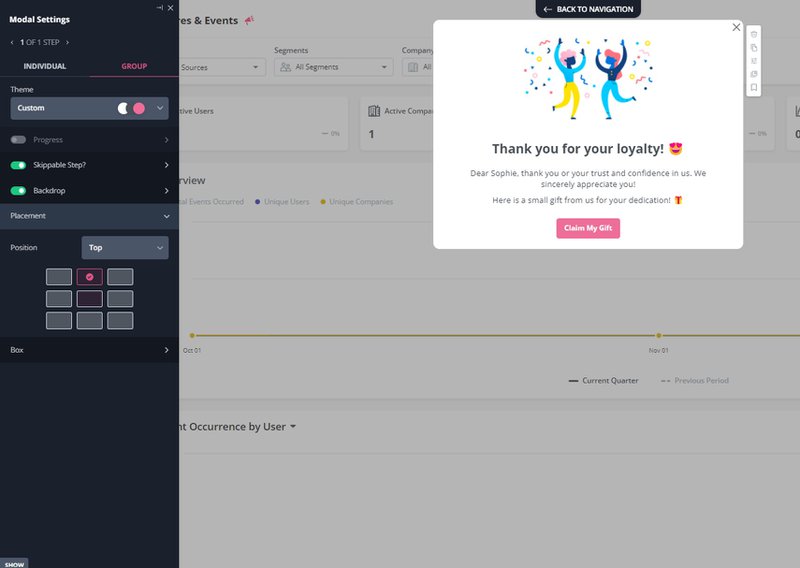
Rewards may vary from cashback to subscription discounts, free subscription months, feature upgrades, free trial extensions, or even branded swag giveaways.
Powerful tools for creating a personalized customer retention strategy
Creating personalized customer retention programs doesn’t have to take all of your time. Thankfully, tools already exist to make this task easier. Consider some of them:
Userpilot – for collecting and using data for in-app retention marketing
First on the list is Userpilot, a code-free product growth platform with tools for driving user activation at scale, boosting feature adoption, delivering in-app engagement, and increasing product stickiness. Explore how you can improve the retention in your mobile app with Userpilot’s mobile features.
Thanks to its many personalization features, Userpilot offers a great price-to-value ratio despite its price. These features include:
Advanced Segmentation: Userpilot provides you with custom goals and feature-tagging capabilities for tracking in-app user behavior. Its advanced segmentation system offers multiple segmentation criteria, allowing you to implement micro or macro-segmentation.
Self-service support: Leverage Userpilot’s knowledge base software to implement a full-scale proactive support system. Group content by themes, add video guides and webinars, and determine which content appears to a user based on their segment.
Onboarding flows: Userpilot enables you to build engaging onboarding flows and mobile onboarding flows into your product with tooltips, modals, etc. It helps you build segmented onboarding flows, implement onboarding checklists, and/or implement a continuous onboarding flow.
Surveys: Guage user sentiment through in-app surveys. Userpilot helps you create different types of in-app surveys, including NPS, churn, CSAT, onboarding, mobile surveys, and other feedback surveys.
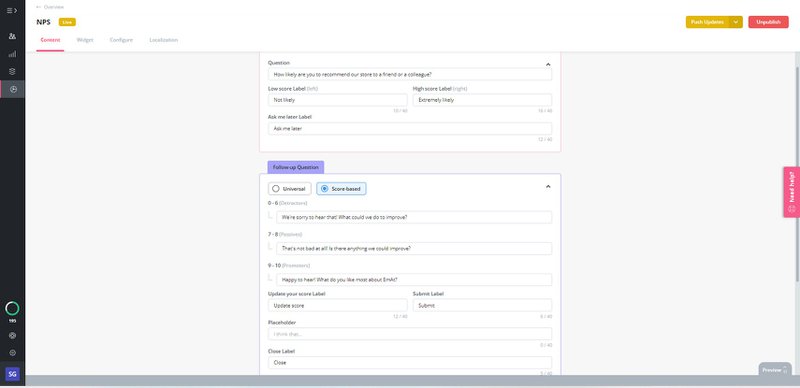
Contextual communication: Trigger modals, tooltips, banners, hotspots, slideouts, or surveys, based on in-app events. Using feature tagging and other custom event triggers, you can deliver personalized videos, messages, or surveys based on user actions or segments.
Pendo – for limited free personalized retention
Pendo is a digital adoption platform that helps drive customer retention via a range of analytics, onboarding, and other personalization features.
Unlike Userpilot, Pendo offers a free plan with limited functionality. It’s a great tool for getting started with personalization strategies without breaking the bank on more expensive tools like Userpilot. However, for more functionality, you’d need a paid tier.
Pendo Guides serve to help you onboard new users and create other in-app experiences for them. They consist of tooltip-like sequential experiences and are built using a WYSIWYG (what you see is what you get) Visual Design Studio.
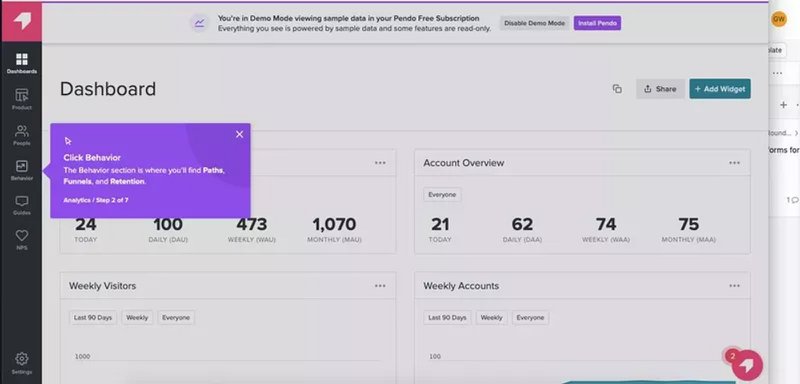
Types of UI elements available within Pendo Guides include Polls, Tooltips, Banners, Walkthroughs, and Lightbox. However, these are usually quite basic and don’t support extensive customization without coding.
Pendo also doesn’t support custom event triggers for specific user segments. This means you can’t trigger guides, tooltips, etc. to user segments in response to specific in-app events.
Likewise, Pendo Checklists help you create checklists with a clean, modern design. However, the checklists are “hidden” in the Resource Center, making them hard to find and difficult to use as onboarding elements.
Appcues – for personalized retention marketing on mobile apps
Appcues is a WYSIWYG no-code user onboarding platform. It helps non-technical teams track and analyze product usage, launch surveys, and publish in-app onboarding tours.
Appcues is an easy-to-use tool with a simple, easy-to-understand UI. Like Userpilot, you get started by installing the Chrome extension, choosing your desired UI pattern (modals, slideouts, tooltips, or hotspots), and customizing it for your needs.

The visual editor makes it easy to build UI flows and product tours. You can also create customizable onboarding checklists to guide users through the onboarding process. However, this feature isn’t available on all Appcues plans.
Appcues boasts a decent segmentation feature, as well as the ability to tag elements, track UI engagements, and create custom events. Unfortunately, it doesn’t support multiple segmented product tours, lacks A/B testing, and lacks gamification features.
Overall, while it isn’t a bad tool, Appcues’ limitations despite its pricing mean Userpilot retains an edge over it for more customizable personalization strategies.
Conclusion
In addition to any acquisition efforts, you must also make efforts to retain your customers. Tools like Userpilot help drive your customer retention strategy through personalization. Book a demo to learn more about how Userpilot helps you.






